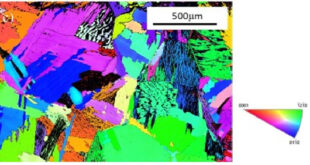Significance
Turbulent flows analysis at higher Reynolds numbers is generally difficult due to their unpredictable and chaotic nature. Despite its importance, it is challenging to achieve because imposing surface in turbulent flows results in anisotropy, inhomogeneity and spatiotemporal scales. For wall-bounded flows, the near-wall region has attracted research attention owing to its dynamics and intermittent nature. Extensive studies have been conducted to illustrate the near-wall region of wall-bounded turbulent flows in different aspects, including statistical and self-sustaining mechanisms. Nonetheless, the nonlinearities responsible for sustaining near-wall turbulence, particularly for high Reynolds number unconstrained flows, are still poorly understood.
The self-sustaining capability of turbulence has been analyzed based on two main mechanisms: parent-offspring and streak instability. The former suggests that vorticity lifting from the wall is a consequence of the trailing ends of the passing primary hairpin-like structure. Streak instability is mostly associated with constrained turbulence because it depends on reduced-order systems. Reverse flow events, though rare, occur in canonical wall turbulence because vorticity is only generated at the wall.
Based on the flow dynamics of the rare backflow events, there is a high likelihood that the events are associated with vortex autogeneration. Nevertheless, current and past studies on rare events have mainly focused on their flow kinematics from the statistical point of view. To this end, a dynamic understanding of the origin, time evolution and consequences of the flow structures associated with the rare events is extremely important to complement the available knowledge.
Herein, Australian scientists: PhD candidate Byron Guerrero, Dr. Martin Lambert and Dr. Rey Chin from the University of Adelaide investigated the precursors of rare backflow events and their relationship with the nonlinear vortex autogeneration near the wall using direct numerical simulation of turbulent pipe flows with high spatiotemporal resolution. The study adopted a cylindrical coordinate system due to the nature of the pipe flows. A series of flow dynamics like nonlinear vortex and streak interaction, which produce strong azimuthal buffer vortices associated with the existence of backflow events, as well as the probability and frequency of backflow autogenerations were analyzed. Their work is currently published in the Journal of Fluid Mechanics.
The authors revealed that the collision between two large structures travelling at different convection velocities (high-speed streak (HSS) and low-speed streak (LSS)), is the main precursor of the backflow event. The two most important flow structures were reported to be LSS and forward inclined HSS located at the near-wall region and upstream from LSS, respectively. The asymmetric collision generated a localized and unstable inflectional profile that resulted in lifting a shear layer with high vorticity magnitude located at the LSS-HSS interface, especially at the training end of the LSS. With time, an oblique vortex arose where the lifted layer existed.
As the local enstrophy of the vortex increased due to stretching and tilting, its circular motion generated a backflow event. With time after the formation of the backflow event, the vortex triggered the LSS breakdown, splitting it into small- and large-section parts. In addition to the streak collision, enstrophy intensification via stretching also provided an additional explanation for generating an azimuthal vortex. Furthermore, it was shown that approximately 50% of the backflow events are followed by at least one more vortex generation that contributes to the formation of new backflow events. Following the appearance of the initial backflow event, a maximum of seven regenerations were observed.
In summary, the study provided an in-depth and plausible explanation and understanding of precursors of rare backflow events at the wall and related flow structures for the generation and evolution of buffer vortex. The findings further showed that the negative wall friction patches/reverse flow events at the near-wall region represent nonlinear vortex regeneration signature. The results were consistent with those previously reported regarding the self-sustaining process of near-wall turbulence. In a statement to Advances in Engineering, the authors stated that the study presented an alternative approach for investigating self-sustaining processes in unconstrained turbulent flows at high Reynolds numbers, which could be extended to other useful applications like flow control techniques.
Reference
Guerrero, B., Lambert, M., & Chin, R. (2021). Precursors of backflow events and their relationship with the near-wall self-sustaining process. Journal of Fluid Mechanics, 933, A33-24.
 Advances in Engineering Advances in Engineering features breaking research judged by Advances in Engineering advisory team to be of key importance in the Engineering field. Papers are selected from over 10,000 published each week from most peer reviewed journals.
Advances in Engineering Advances in Engineering features breaking research judged by Advances in Engineering advisory team to be of key importance in the Engineering field. Papers are selected from over 10,000 published each week from most peer reviewed journals.

